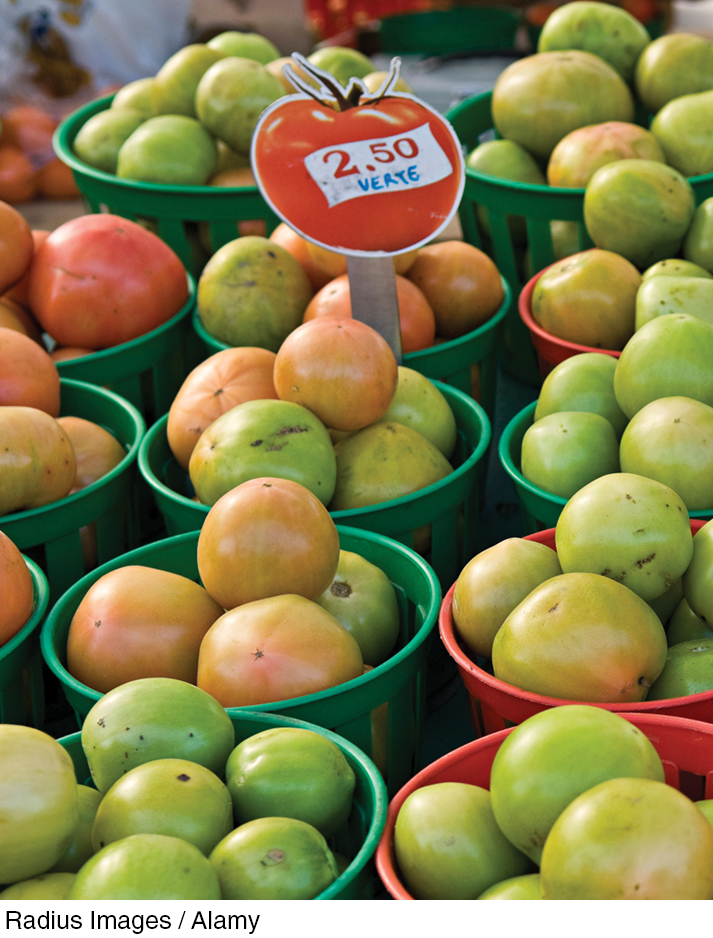Perfect Competition
8

Learning Objectives
8.1 Name the primary market structures and describe their characteristics.
8.2 Define a perfectly competitive market and the assumptions that underlie it.
8.3 Determine a competitive firm’s profit-
8.4 Analyze the conditions for profit maximization, loss minimization, and plant shutdown for a firm.
8.5 Derive the firm’s short-
8.6 Use the short-
8.7 Describe why competition is in the public interest.
Visit your local farmer’s market on a weekend morning, and you’ll find dozens of individual stands offering the freshest fruits and vegetables, many of which are grown locally and delivered to the market directly by the grower. As you meander through the market, you notice that the prices for any one type of fruit or vegetable are virtually the same from one stand to another. Further, the prices at the farmer’s market often aren’t much different from those that you might find in your grocery store’s produce section.
With prices being nearly identical, shoppers are then left with the challenge of selecting the fruits and vegetables that look, feel, smell—
This is the essence of a purely competitive market—
The nature of intense competition extends well beyond farming, of course. Many of the goods we consume each day are produced in massive factories, often in Asia, where thousands of workers toil diligently in an often dreary environment to provide what we desire at the lowest cost. Before we debate the merits of whether this is good or bad for the factory workers, let’s look at why many companies are using this form of production to stay competitive.
A firm’s production function describes the manner in which inputs (resources such as labor and capital) are turned into outputs (goods). Since the cost of a set amount of inputs is fixed, being able to manufacture more with those inputs reduces the cost of production and increases productivity.
How does a firm increase productivity? First, it can hire better workers or offer training to make each worker more productive. Second, it can utilize better machinery (capital). And third, it can design the factory in a way to maximize the production given the workers and capital available. Choosing the production method by which inputs such as labor and capital are used is critical to productivity and the success of a firm. This is the role of the manager. If a firm uses inputs inefficiently, more efficient firms will drive it out of business.
The goal of any firm is to maximize profits given the market structure in which it exists. This is easier in some markets than in others. For example, if a company is the industry leader and has few competitors, earning profits is easier than it is for a struggling company facing intense competition.
This chapter focuses on market structure and the purest form of competition, which we call perfect competition. We explore some of the implications competition has for markets and consider why the competitive market structure is so central to the thinking of economists. When Adam Smith wrote his classic book The Wealth of Nations, he wrote of a “hidden hand” that guides businesses in their pursuit of self-
1 Stephen Jay Gould, The Structure of Evolutionary Theory (Cambridge, MA: Belknap Press of Harvard University Press), 2002, pp. 121–
In this and the next two chapters, keep in mind the profitability equation. Profits equal total revenues minus total costs. Total revenues equal price times quantity sold. Keep in mind the three items that determine profitability: price, quantity, and cost. We will see how firms try to control each one of these. What you learn in this chapter will give you a benchmark to use when we consider the other market structures in the following chapters.